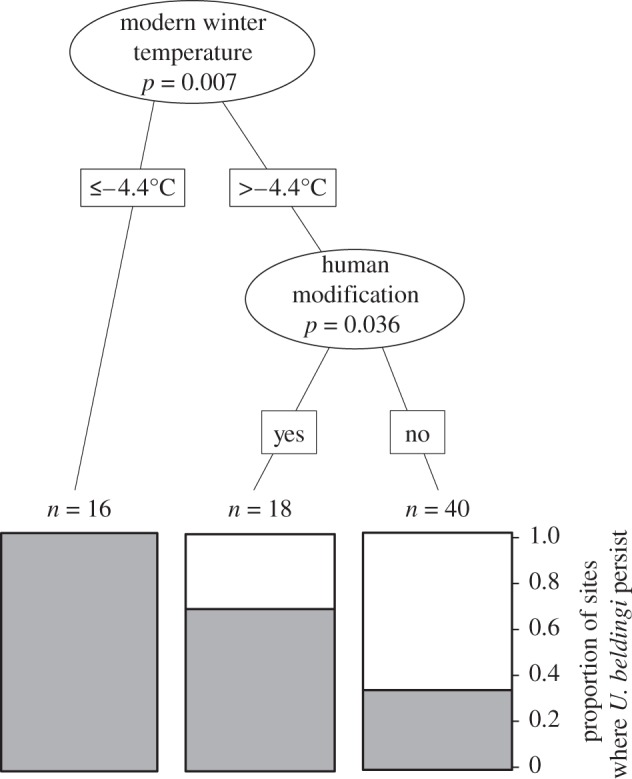Figure 2.

Classification tree showing the effect of climate factors and human modification on U. beldingi persistence. Grey shading denotes the proportion of persistent sites modelled in each category. Increased probability of persistence is associated with low (average less than or equal to 4.4°C) coldest quarter temperatures and ‘anthropogenic refugia’ created by a human-mediated increase in food and water availability. Although modern wettest quarter precipitation and change in warmest quarter temperature were included in the best model, they were not significant at p < 0.05 and thus do not appear in the figure.
